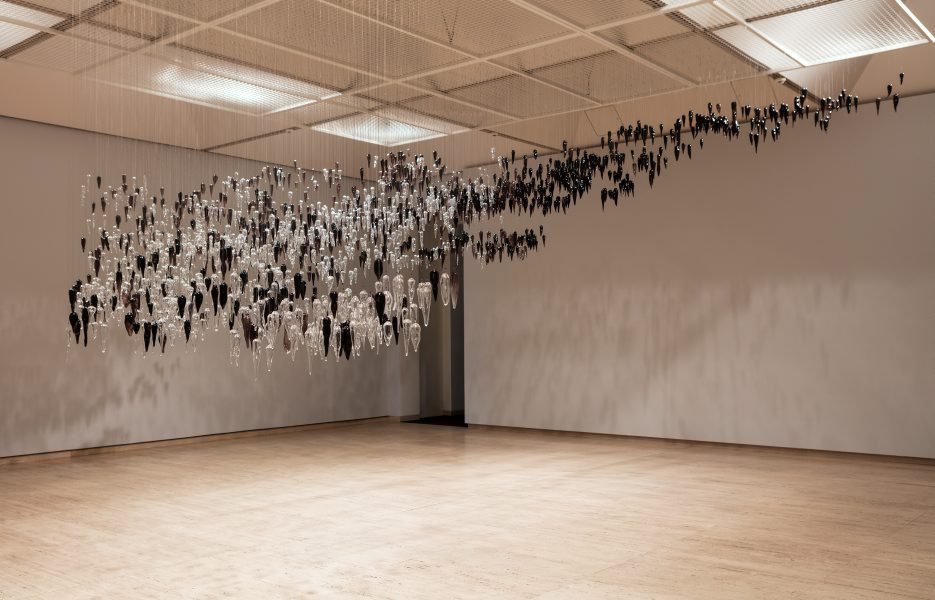Title
Death Zephyr
2017
Artist
Yhonnie Scarce
Australia
1973 –
Language groups: Kokatha, Southern Desert region, Nukunu, Spencer region
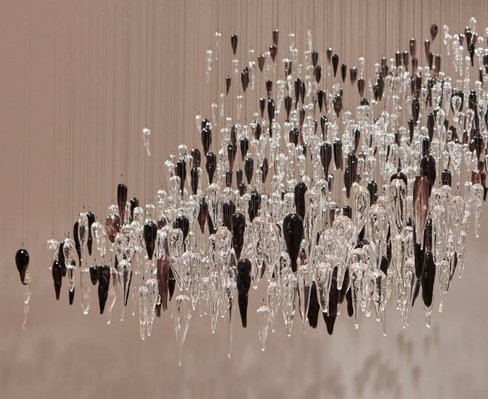
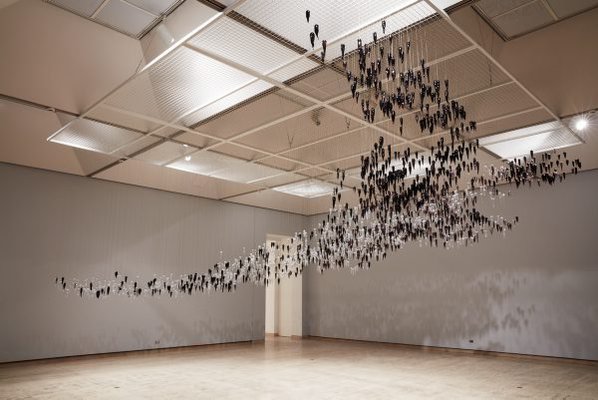

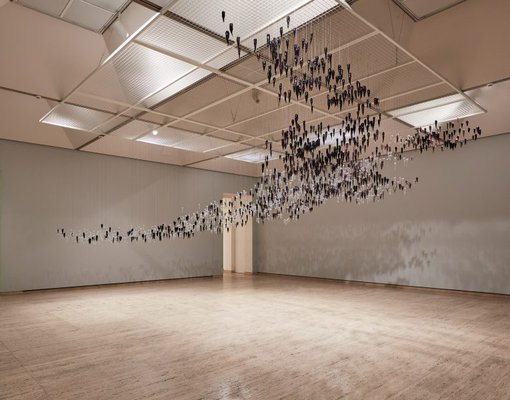
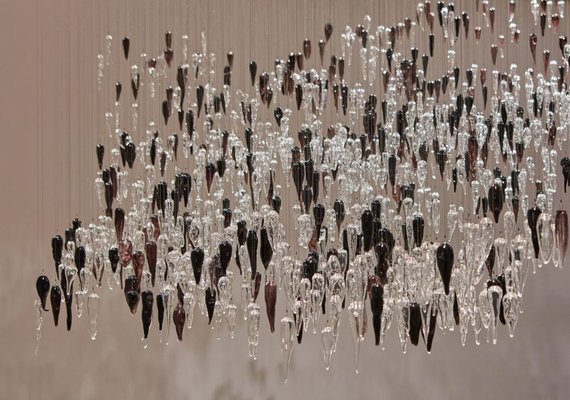
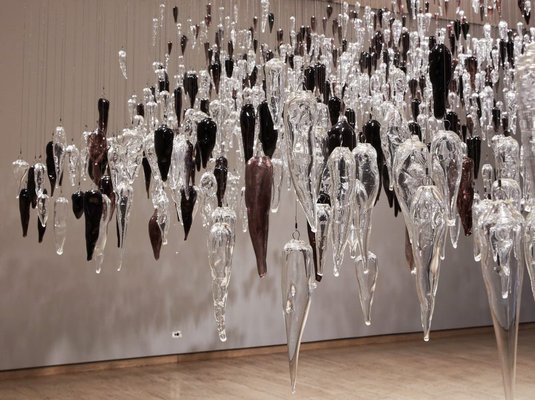
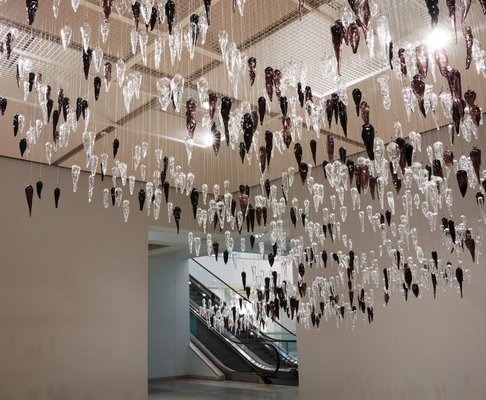
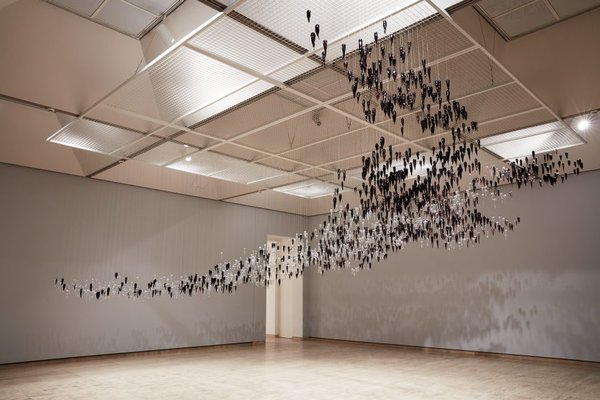

-
Details
- Place where the work was made
-
Melbourne
→
Victoria
→
Australia
- Cultural origin
- Kokatha, Southern Desert region/Nukunu, Spencer region
- Date
- 2017
- Media category
- Installation
- Materials used
- hand blown glass, nylon and steel
- Dimensions
- dimensions variable
- Signature & date
Not signed. Not dated.
- Credit
- Purchased with funds provided by the Aboriginal Art Collection Benefactors 2017
- Location
- Not on display
- Accession number
- 14.2017.a-c
- Copyright
- © Yhonnie Scarce
- Artist information
-
Yhonnie Scarce
Works in the collection
- Share
-
-
About
‘In the suspended, wraith-like clouds of Yhonnie Scarce’s installation ‘Death Zephyr’ 2017 we are temporarily blinded to the lingering effects of the British nuclear tests on Aboriginal land across much of inland South Australia in the 1950s. On close inspection, the beauty of the work is subsumed by a deeper sense of national unease, of the excesses of blind ethno-nationalism, the flagrant disregard for human life and indifference to environmental destruction of which nations are capable.’ Daniel Browning
Yhonnie Scarce works predominantly in glass. Her work considers the scientific research and concepts that have impacted and have ongoing effects on Aboriginal people. In this major installation Scare employs small glass yams, which she feels represent people, to create a vast, wind-swept form that refers to the poisonous clouds that rained across Maralinga, SA as the British and Australian governments undertook nuclear testing there in the 1950s and 1960 forever altering the landscape and dramatically effecting people’s lives.
-
Places
Where the work was made
Melbourne
-
Exhibition history
Shown in 3 exhibitions
The National 2017: New Australian Art, Art Gallery of New South Wales, Sydney, 30 Mar 2017–16 Jul 2017
Yiribana Gallery: opening collection display, Art Gallery of New South Wales, North Building, Sydney, 03 Dec 2022–29 May 2023
Yhonnie Scarce: The Light of Day, Art Gallery of Western Australia, Perth, 03 Feb 2024–19 May 2024
-
Bibliography
Referenced in 6 publications
-
Genevieve O'Callaghan (Editor), The national 2017: new Australian art, Sydney, 2017.
-
Toni Ross, Artforum, 'The National: new Australian art', pg. 385, New York, Summer 2017, 385. exhibition review
-
Yhonnie Scarce (Artist), Yhonnie Scarce: The Light of Day, Sydney, 2023, 46 - 49, 65.
-
Erin Vink, Extraction: Art on the edge of the abyss, 'The Great Australian Silence', 93-94, Berkeley, 2022, 94.
-
Manuela Well-Off-Man and Erin Vink, Exposure: Native Art & Political Ecology, 2022, 182, 195.
-
Amelia Winata, Broadsheet Journal, 'Undoing the neutral: the sculpture as pointer', pg. 39-44, Adelaide, 2017, 42.
-
